Digitally Transforming Greece's Public Power Corporation
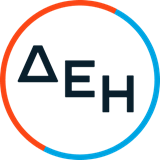
With power from the past and vision for the future
The Greek Public Power Corporation (PPC) is one of the largest organizations in Greece and a pioneer in the field of Energy in Europe, with a long history and significant impact in the Greek society.
PPC, under its new progressive management, with a pioneering vision regarding the company’s position in the energy market, decided to completely transform its digital touchpoints in order to offer innovative services through state-of-the-art Customer Experiences. This omni-channel digital transformation journey includes the redesign and redevelopment of the www.dei.gr public website, its official mobile app, and several of its transactional self-service portals such as e-bill, e-procurement, e-appointment, etc.
Our approach
The objective of the first phase of the project was to transform the public website of PPC with emphasis on a human-centric, goal-focused Customer Experience, aiming to cover the personalized needs of every visitor. Our priority was to create a new digital environment which would highlight PPC’s new brand identity, convey its corporate values, allow PPC’s customers to interact seamlessly with the brand, and boldly present PPC’s progressive approach towards the future of energy in Greece, while keeping a strong connection with its long history and tight bonds with the Greek society.
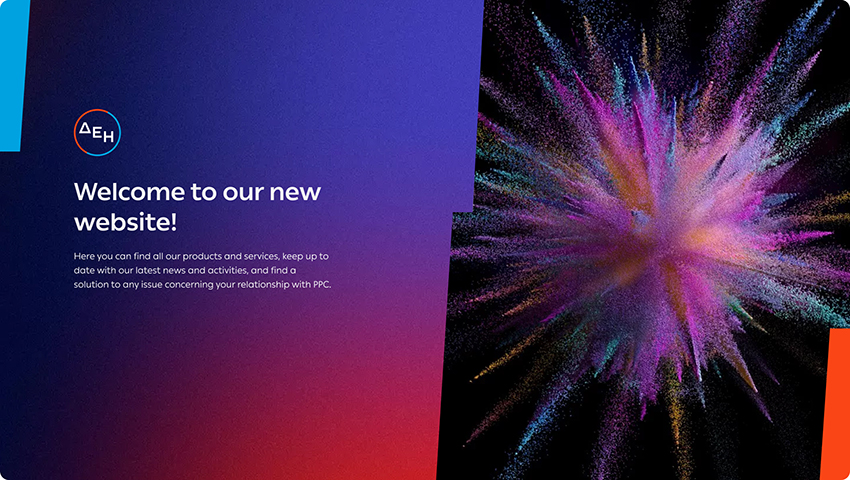
At Linakis.digital we shared PPC’s vision for the project, even at the very early stage of the RFP (Request for Proposals), leading to the award of the project to our company, with an overall 99,5% evaluation of our technical and financial proposal! We then formed a powerful multi-disciplinary team of senior UX researchers, interaction designers, solution architects, front and back-end developers, cloud engineers, and project managers. This team collaborated in an agile way with PPC’s internal teams from various departments and managed to deliver the project on time and within budget, despite its substantial complexity in all aspects.
A brand-new, data-informed Customer Experience
Using advanced UX Research methods we identified, recorded, and distilled the project’s needs via the deep analysis of PPC’s business goals as well as the needs and expectations of its internal stakeholders and the needs of the end users. We also analyzed the trends of the domestic and global energy market, the offerings of the competitors, and the landscape of the underlying technology infrastructure.
Deep market and competitor analysis led to the realization that indeed, the competition in the energy industry is very strong. Competing power companies offer products which are characterized by aggressive pricing, complemented by a set of self-care services through their digital channels. As a result, end users have increased expectations by the end users, who are experienced, knowledgeable, and seek innovative power solutions at competitive prices and with low environmental blueprint.
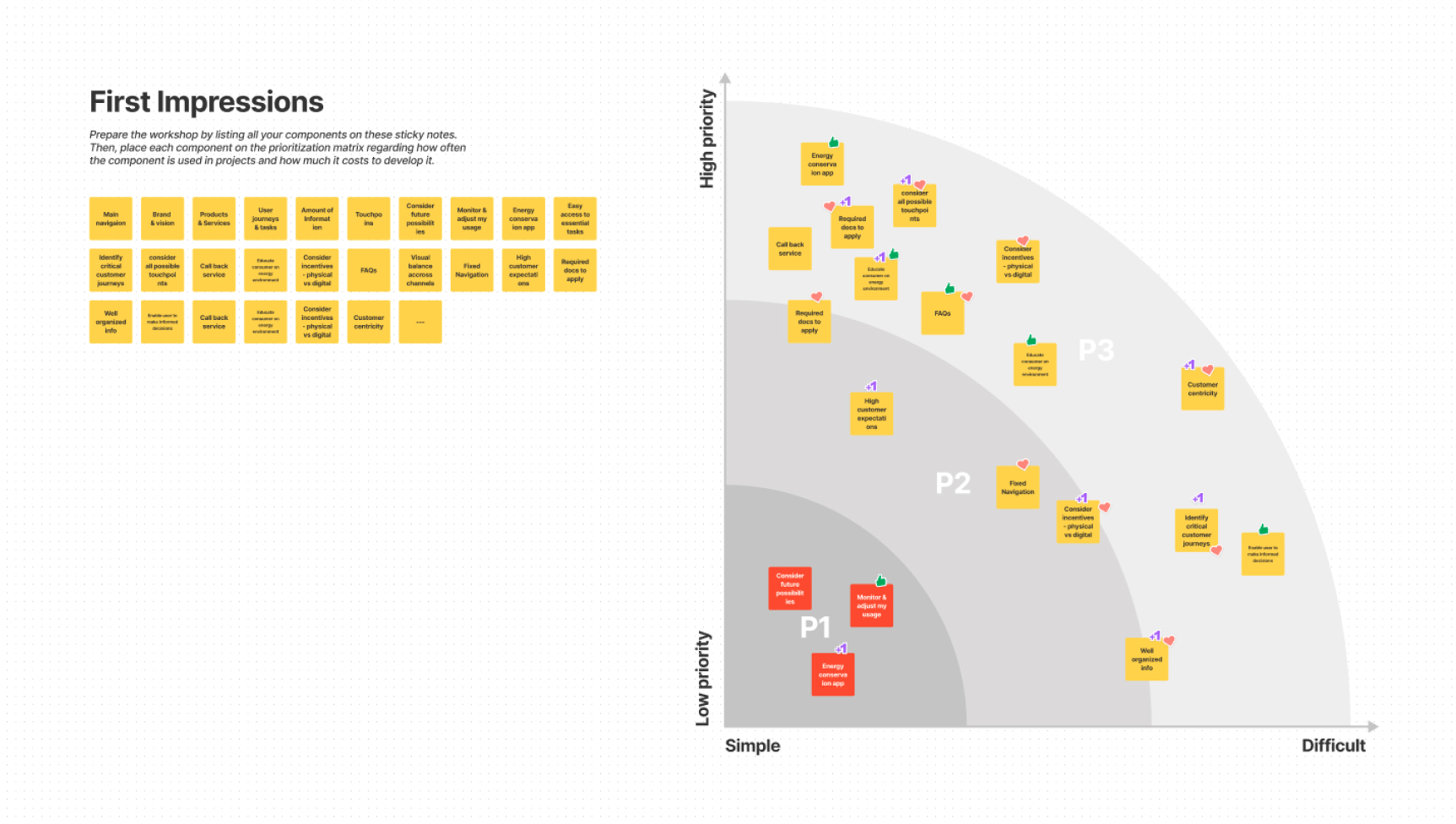
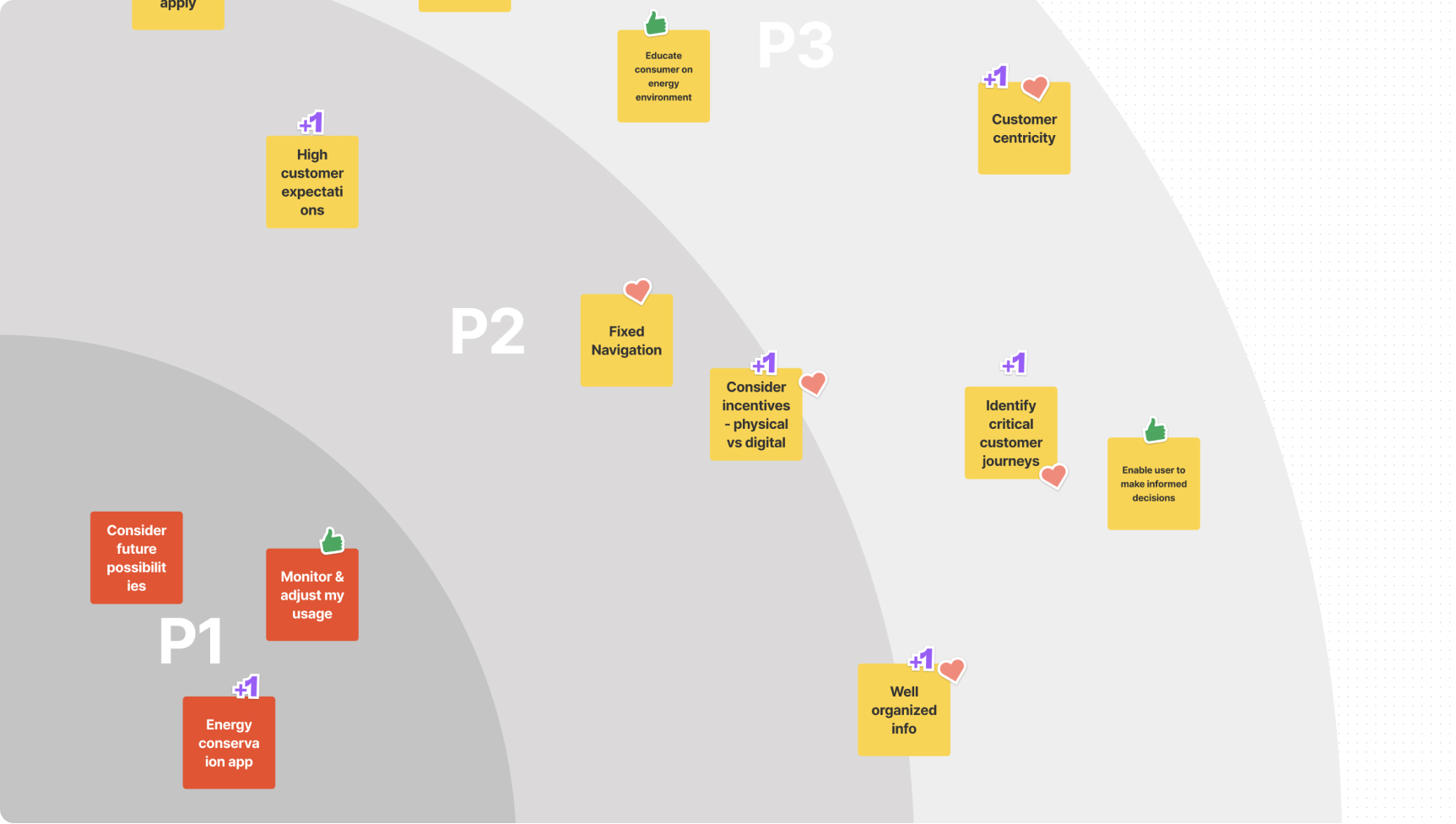
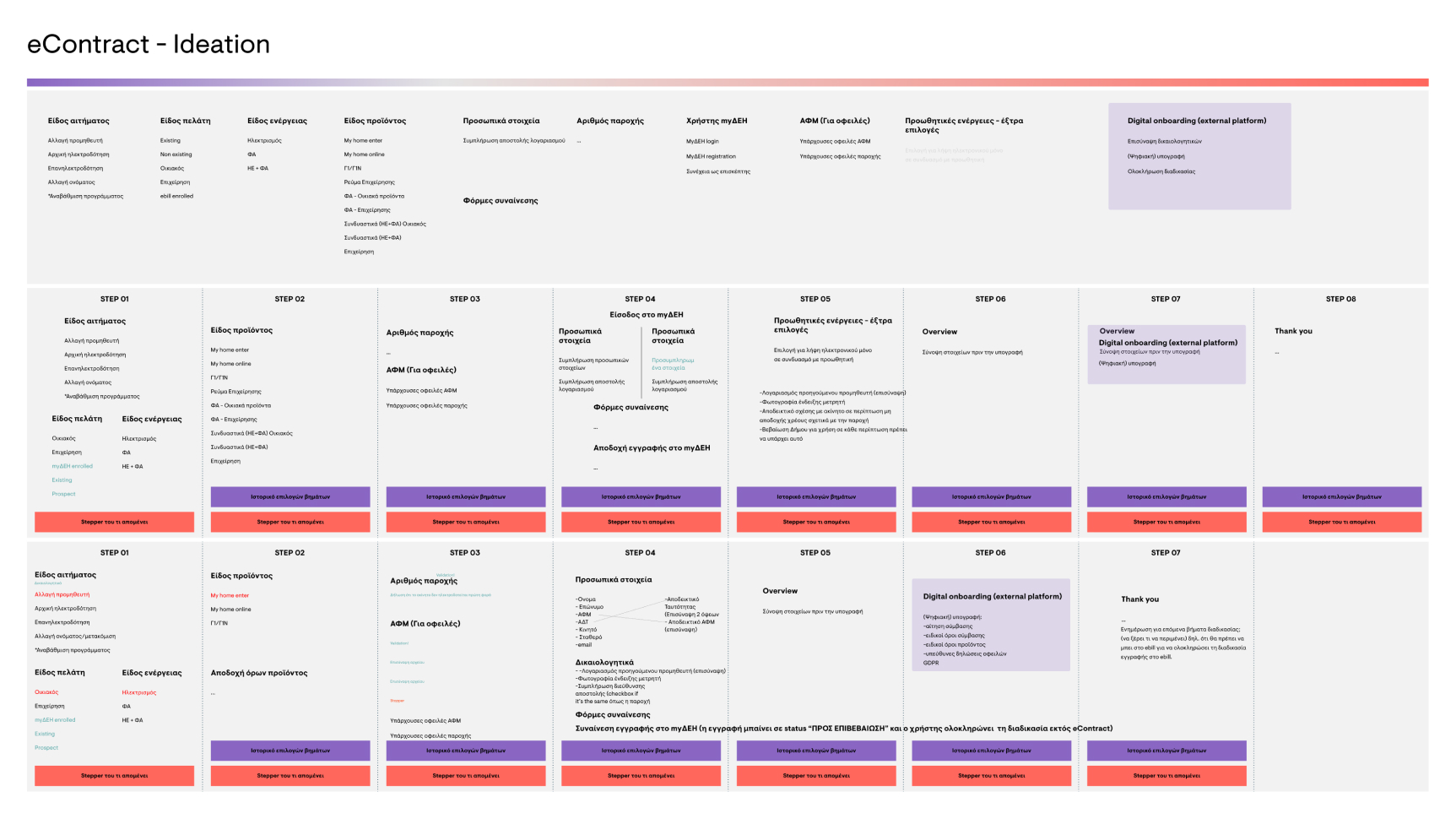
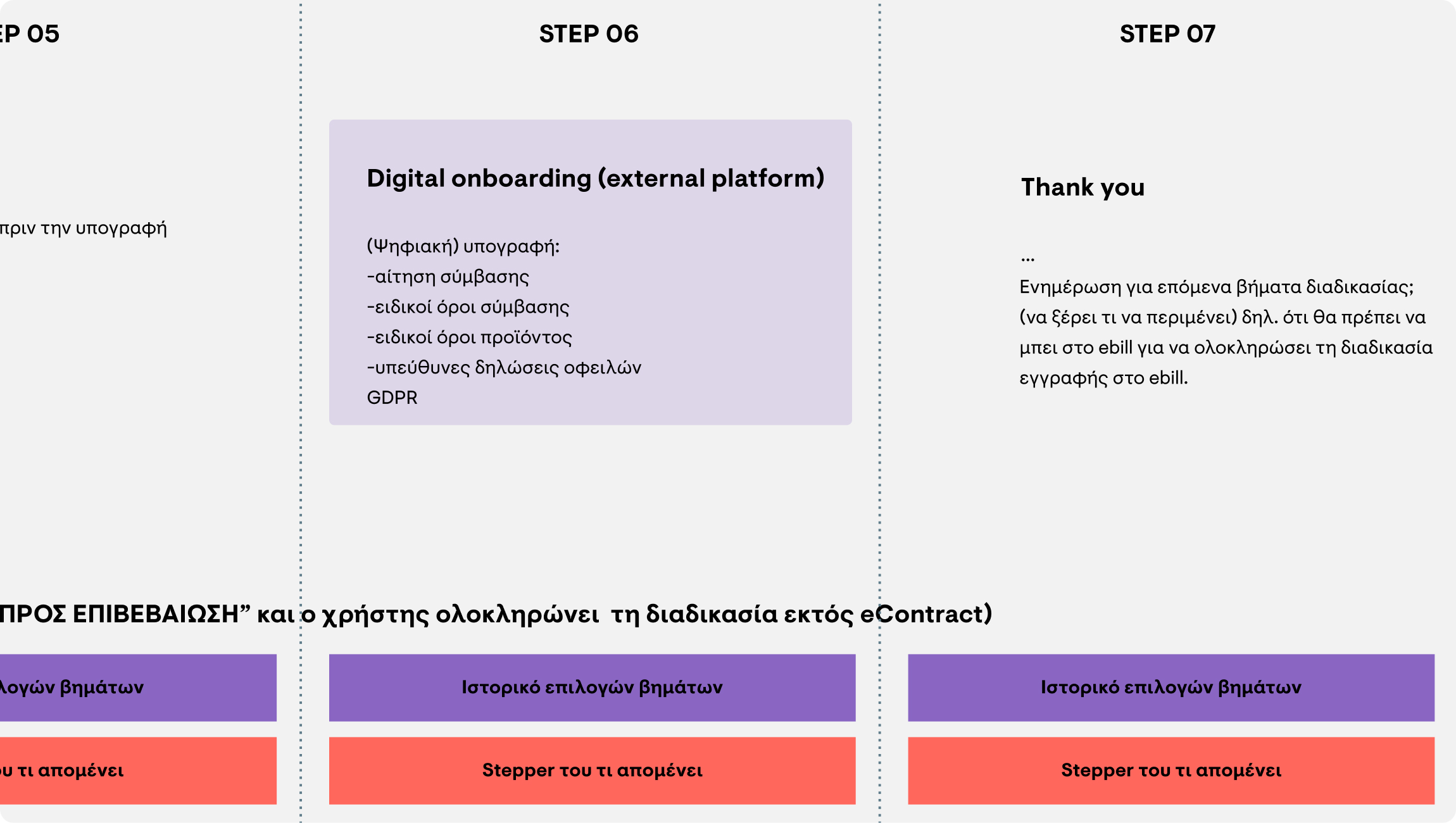
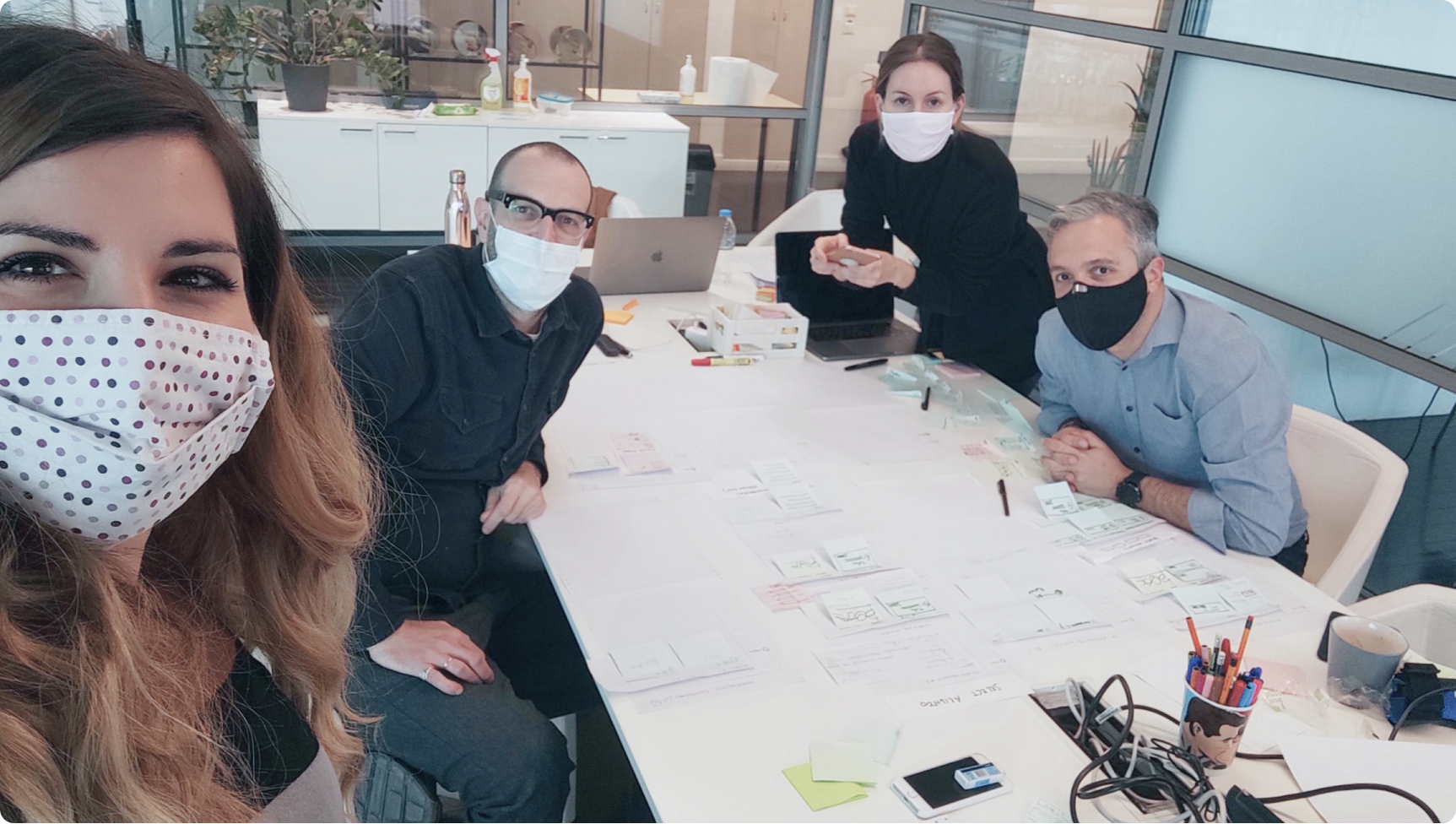
After conducting the above desk research, we organized several stakeholder workshops with PPC’s business unit directors and other staff, to understand the business objectives and priorities of the organization. It was evident that PPC needed to provide end users with a set of progressive digital services, flexible innovative products, and excellent personalized customer service, rather than just inform them about products and services. We also conducted a series of user interviews in order to better understand the needs and aspirations of the end users, and to validate our understanding of their needs, as we had identified them by the previous steps.
The wealth and depth of the information, knowledge and insights gathered by the above steps led to the formation of a new, coherent, and completely upgraded information architecture for PPC’s digital touchpoints. We created a clear structure that follows the mental models of the users so that they can easily find the information they need, interact with the digital assets, and meet their personalized goals.
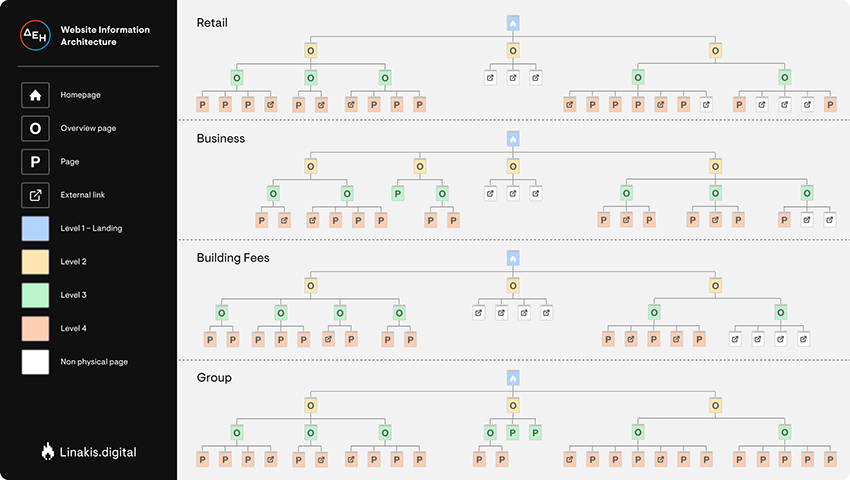
The menu and other informational sections are now organized focusing on the needs of the user. The most important and frequent actions that the users execute are placed in prominent positions of the website to increase findability, reduce time spent on searching and make the experience unique. The new products of the organization are also placed in salient locations. Products are now presented in a consistent, structured, and hierarchical way so that the user gradually receives the necessary information and makes the right decisions.
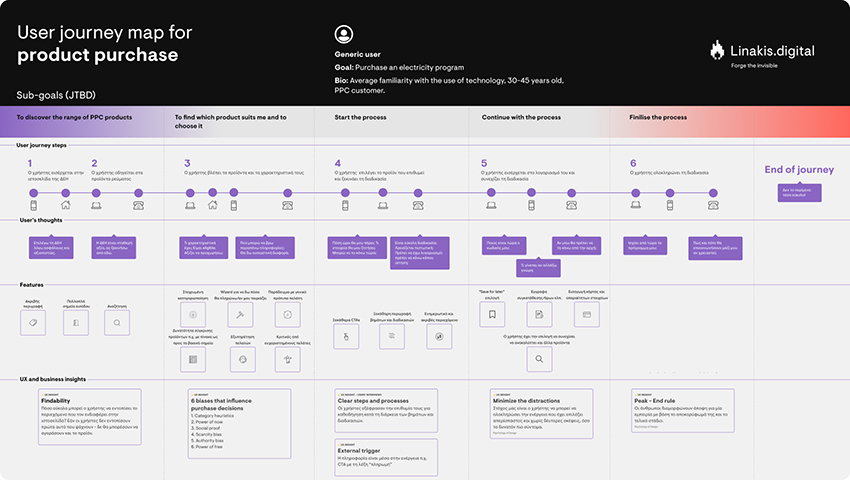
Award-winning design
PPC has recently gone through a complete and highly successful holistic rebranding. The new brand represents PPC’s vision for a bright and exciting future for the corporation and its valued customers. It builds on PCC’s great heritage and long-lasting values to promote its new, human-centric, innovative and environmentally friendly future.
Our award-winning interaction design team undertook the challenge of conveying and highlighting this new identity on PPC’s digital assets, by visualizing a memorable and desirable environment. The new environment consolidates a large number of services through a unified and cohesive experience, brings visibility and clarity to PPC’s product offering, emphasizes its competitive advantages, and ensures that the user experience remains clear and valuable for all users. Additionally, we formed a digital visual vocabulary based on the foundations and principles of the rebranding by shifting design elements to be appropriate for the web experience.
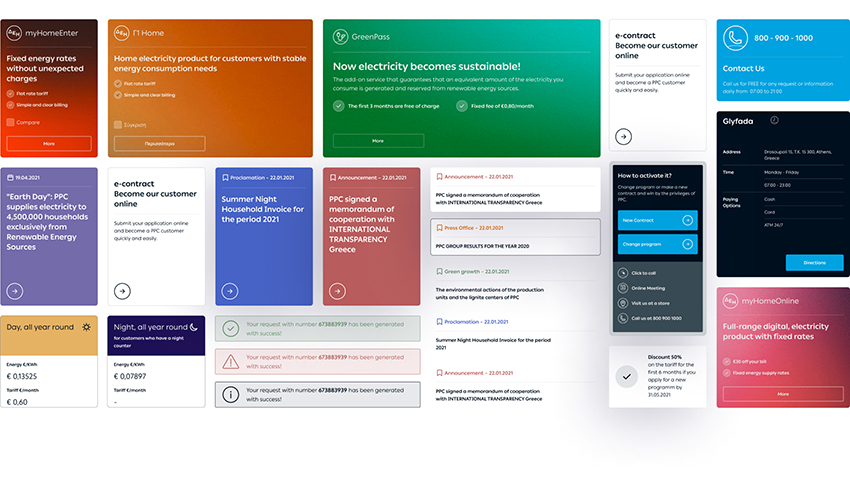
We used the principles of atomic design to create a modular design capable of supporting and combining scalable and reusable modules across PPC’s digital assets. Atomic design is composed of five distinct stages working together to create interface design systems in a more deliberate and hierarchical manner.
Subtle micro-animations and iconography worked as intuitive and interesting ways to communicate messages to the end users, hint towards actionable items, and give a fresh, modern look-and-feel to the website. Content cards helped us avoid long text, group & organize different actions or information, and make the content more scalable.

Throughout the website, we used a light grey background as the color in the body of our pages. It helps users concentrate more on the content (because it is more relaxing for the eyes) and expresses a more sophisticated look and feel. Different energy backgrounds (abstract compositions with color and light gradients) are used to visually represent the products of PPC and differentiate the three main categories of products.
The menu was designed in a way that progressively reveals the complete range of products & services allowing users to seek and find the information they need faster and in a more conceivable way. It consists of successive vertical panels that form a visual representation of the products which include short descriptions as well as the advantages of each product. Users can now understand the product’s details better and easier.
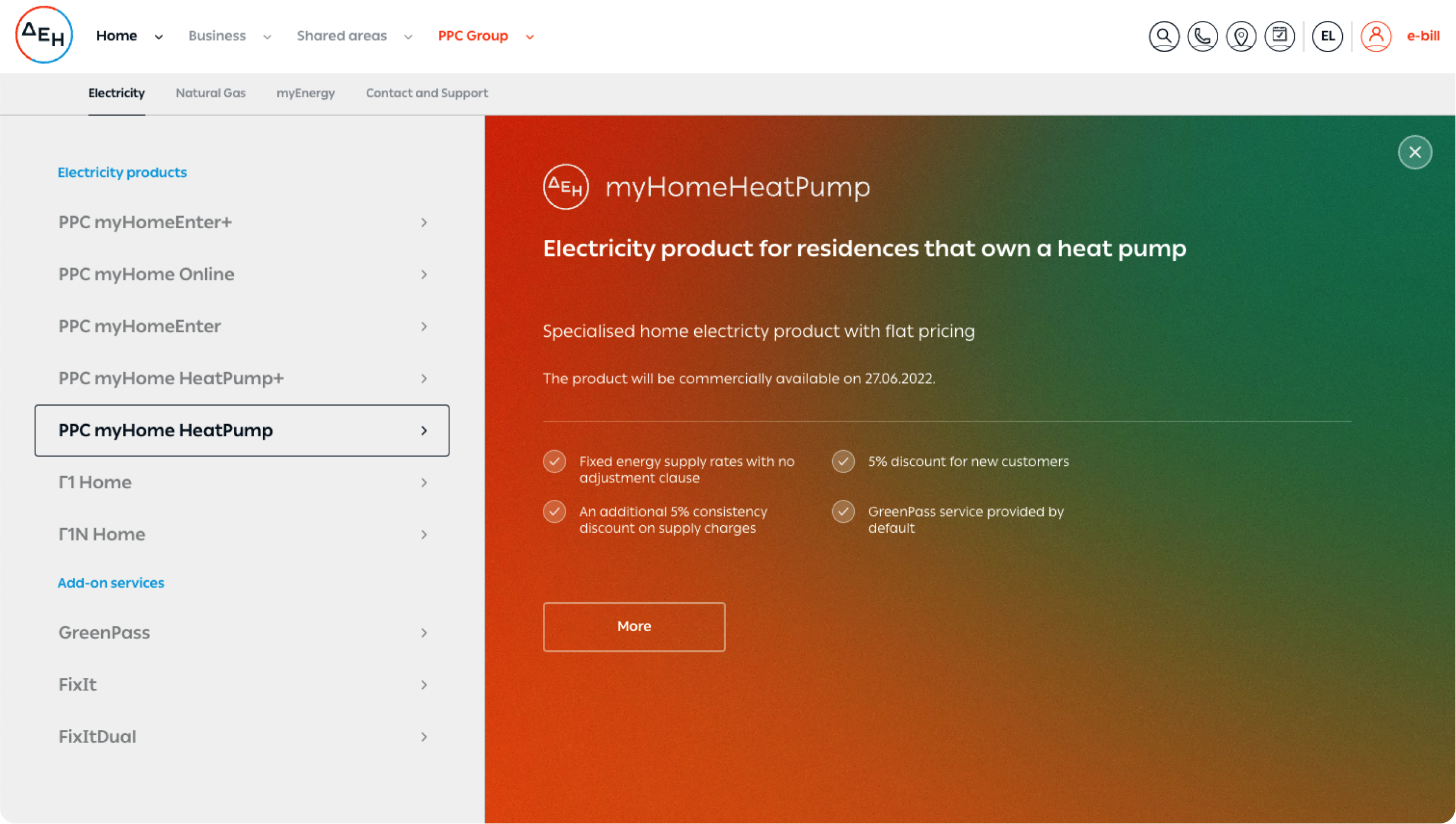
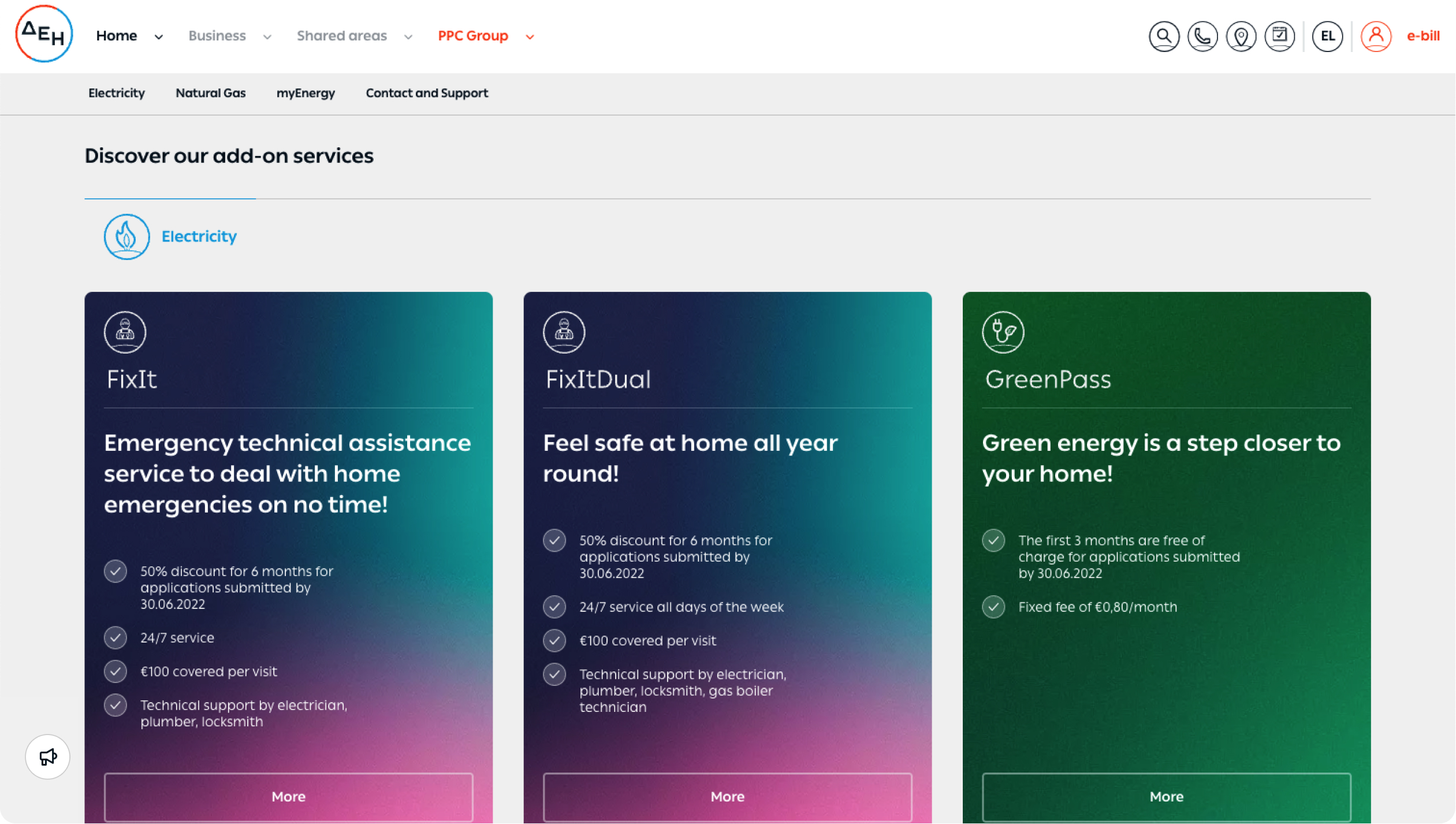
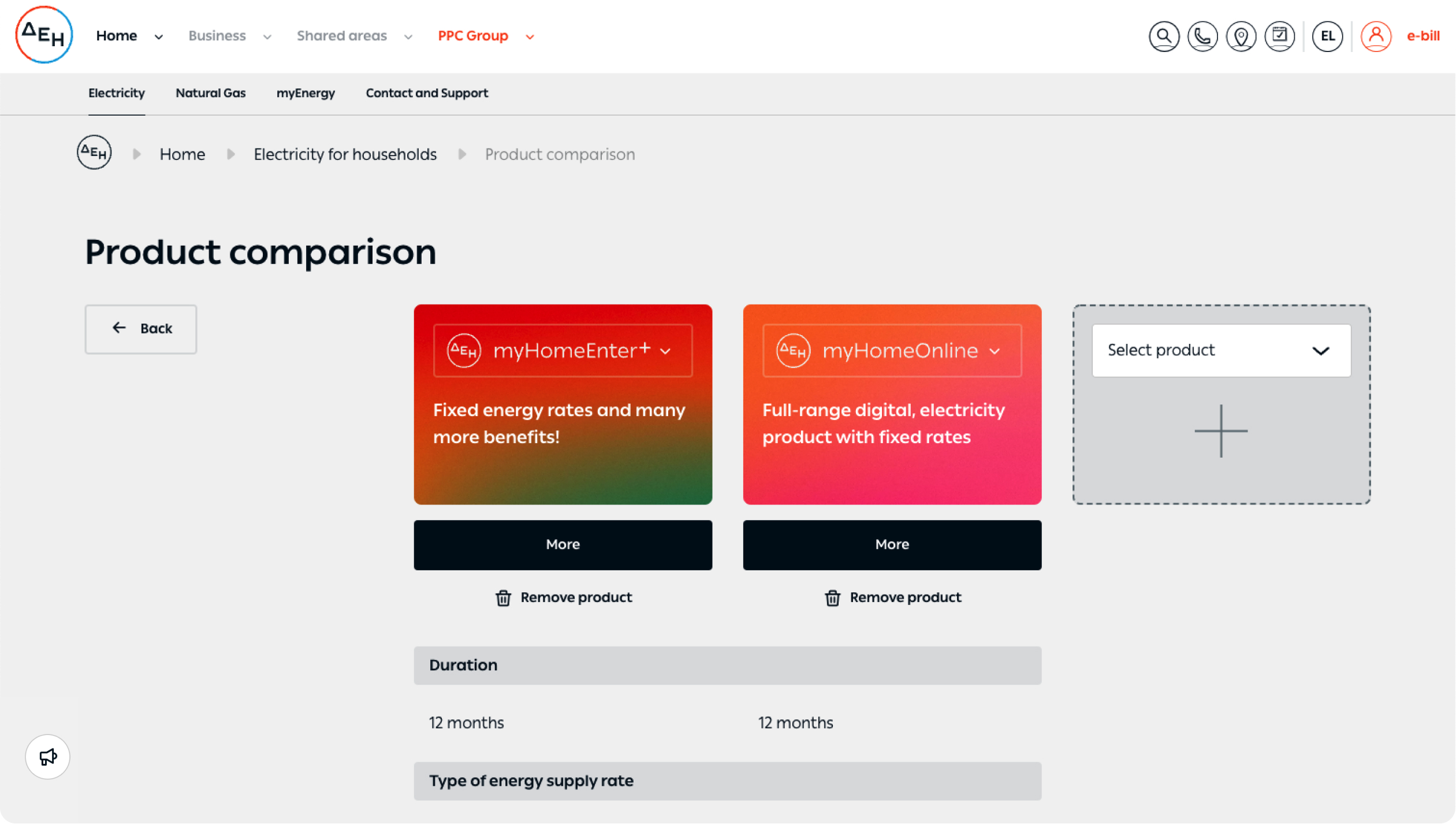
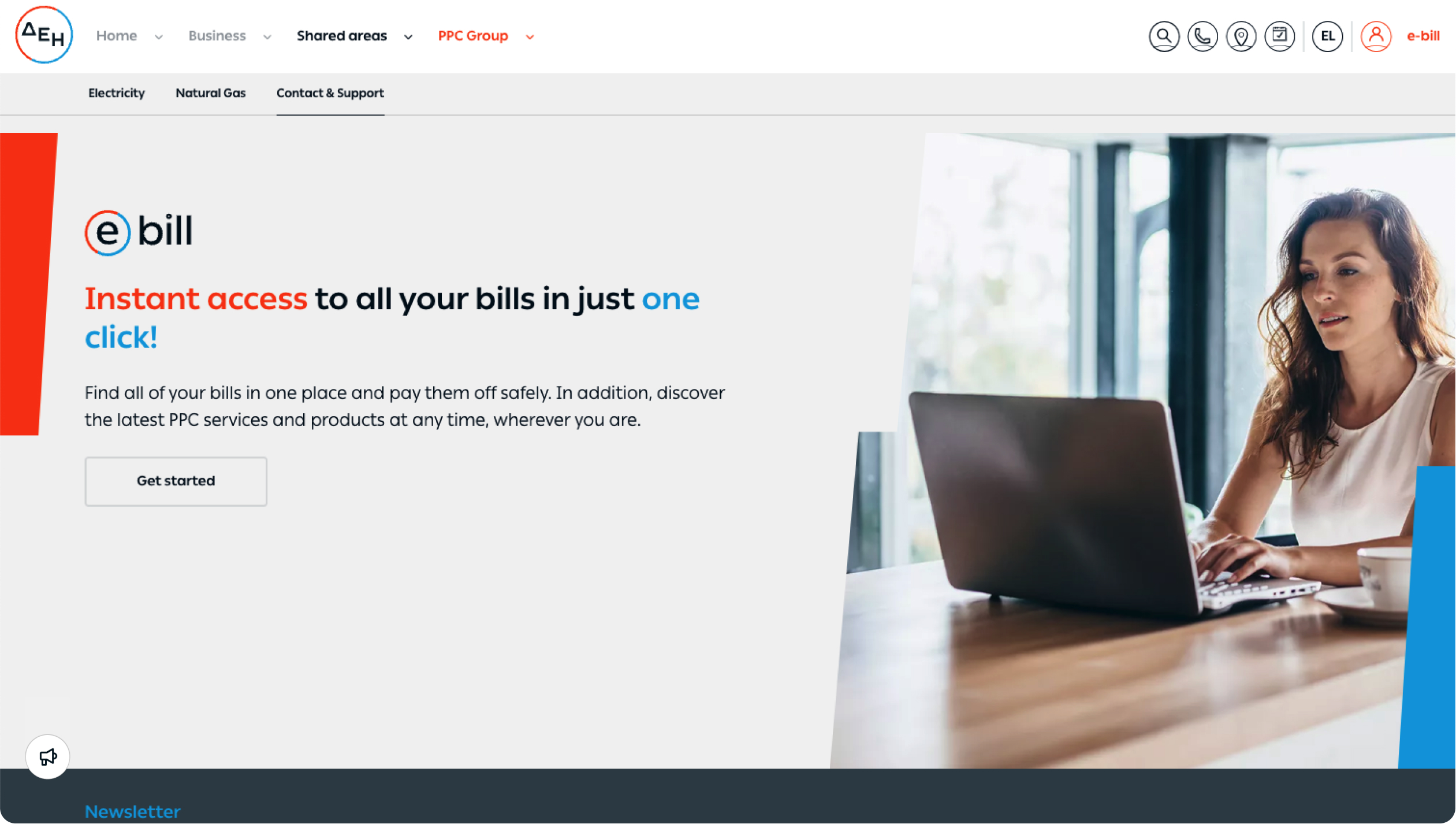
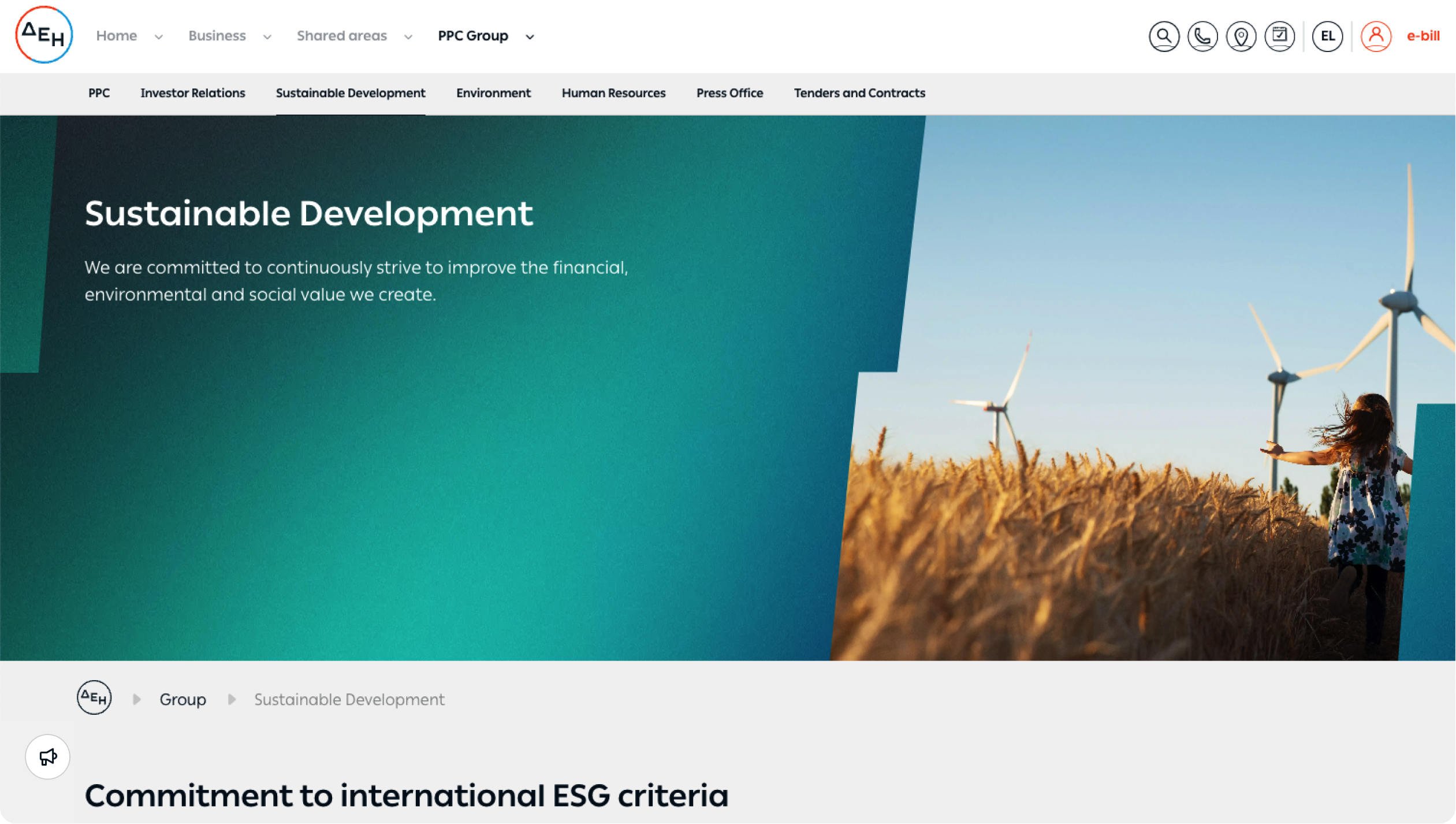
Finally, the website was designed with a mobile-first approach, and with special care to be inclusive and friendly to users with disabilities. For that reason, a text-to-speech module as well as a virtual bot assistant were used.
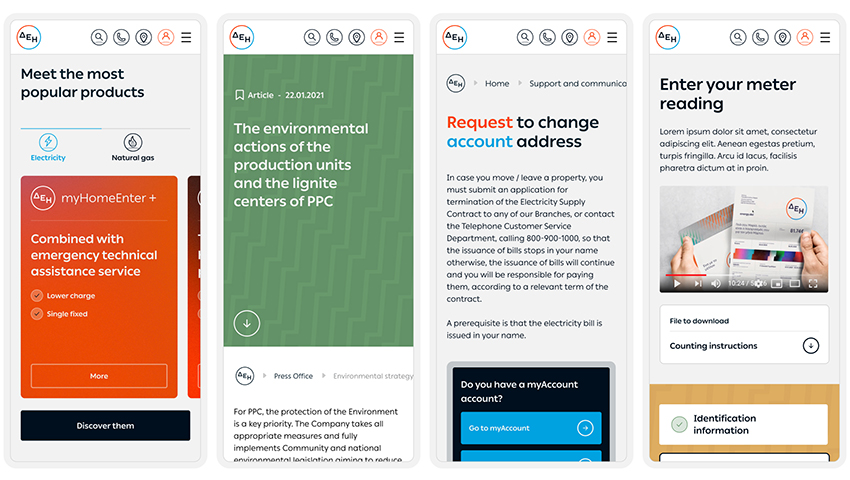
Robust, performant solution architecture
Linakis.digital worked with the internal IT, Security, and Systems teams of PPC to architect, configure, deliver and support a cloud-native, Azure digital ecosystem that is compliant with PPC’s highest standards of performance, security, availability, and maintainability.
The ecosystem of PPC consists of a series of back-office systems and services that ran on-premises. One of the greatest challenges accomplished was the interconnection of these subsystems with the new website, on the Microsoft Azure cloud platform. As a Microsoft Gold Partner with high-level knowledge and experience in Azure implementations, Linakis.digital successfully met these challenges. A typical example of such a challenge for this project was the implementation of the e-contract interface. Its complexity lies not only in the connection with large databases but also in the complicated flow of the related processes. To simplify the process, we implemented a large number of transactional forms using independent, autonomous components that collaborate with various subsystems without requiring any special adaptation.
To ensure excellence in the project’s deliverables we applied several quality assurance practices such as Unit Tests, to inspect the main functional elements of the solution, and Integration Tests, for the transactional part of the solution, creating a mock layer to recreate the necessary test scenarios.
Powerful content management capabilities
The new PPC website is implemented on the Umbraco CMS, which offers flexibility and powerful content management capabilities. The platform meets PPC’s strict technical and operational requirements regarding, seamless content editing and publishing, a collaboration of large teams via workflows, discoverability of content via fast and powerful search, mobile support, and many other enterprise-grade CMS functionalities.
On-time, On-budget, qualitative deliverable
One of our most important goals was to deliver the project under a very strict deadline, within the predefined budget, and without any compromises in quality. We achieved this by establishing a tight, trustful collaboration with PPC’s stakeholders, and by following our flexible project management framework, which is compliant with ISO 21500.
Tangible results
According to the stats for the first two months of the website’s operation, we can infer the following conclusions:
- More than 1,600,000 users visited the website, a fact that demonstrates its resilience to handle a heavy load of traffic.
- The bounce rate has dropped almost by half to 26% (which is globally considered far lower than the acceptable bounce rate in the sector) The bounce rate of the new website shows a significant improvement in engagement and user experience.
- Improvement in user engagement is also evident considering the increase (5’ to 3’) of the average session duration as well the increase of the average pages a user visits in the same session (4 to 3).
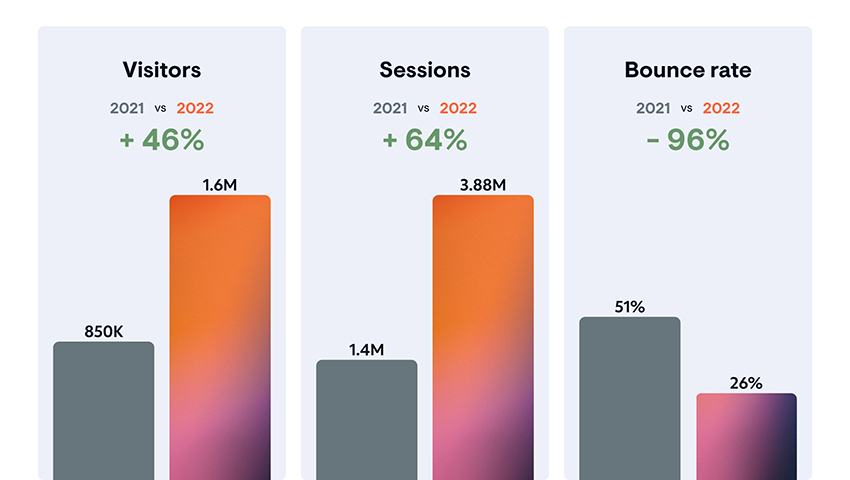
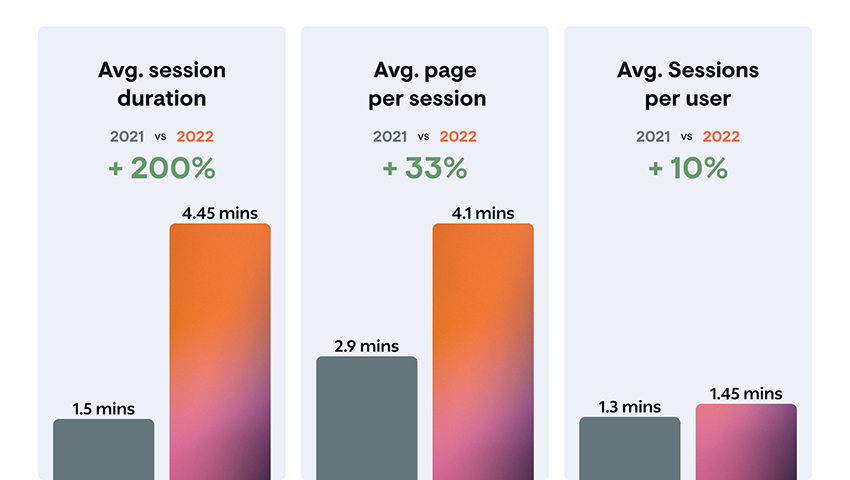
View also
-
The digital transformation of European Reliance A fully customized website that yields high levels of customer engagement.
-
Fast-Track Web Design and Development for Optima bank A fully customized website that yields high levels of customer engagement.
-
Eurobank Digital Transformation Project Enhancing Eurobank’s digital presence


